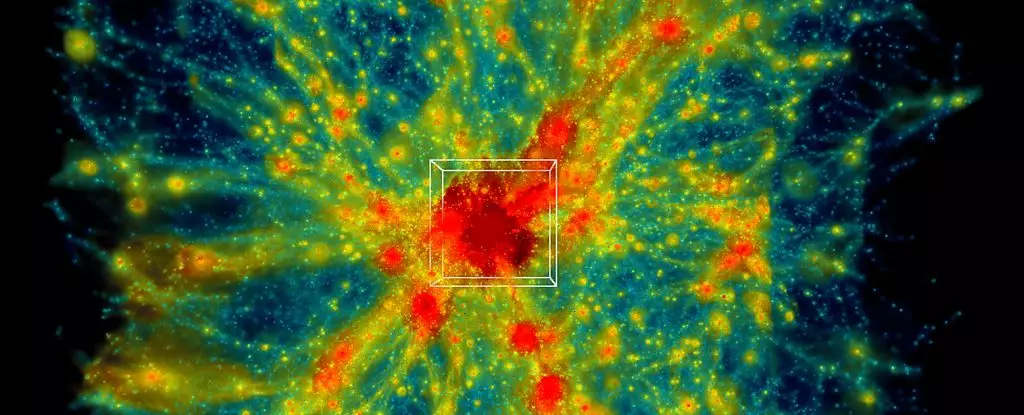In a significant breakthrough for astrophysics, the Oak Ridge National Laboratory (ORNL) has achieved an unprecedented feat in simulating the Universe’s evolution through the ExaSky project. Given the technological advancements in computational power, researchers at ORNL utilized the Frontier supercomputer—boasting 9,000 computing nodes—to grip an expansive simulation volume exceeding 31 billion cubic megaparsecs. This ambitious initiative is poised to unveil the underlying mechanics of cosmic phenomena, including the elusive nature of dark matter, which remains one of the Universe’s greatest enigmas.
Understanding the fabric of the Universe requires delving into its constituents: dark matter and atomic matter. According to physicist Salman Habib from Argonne National Laboratory, these two components are crucial for comprehending universal dynamics. Dark matter, which interacts solely through gravitational forces, contrasts sharply with atomic matter that embodies the physical elements we interact with daily. The ExaSky project aims to simulate not only gravity but also numerous other forces regulating cosmic evolution, encompassing hot gases, star formations, and the birth of galaxies. The comprehensive nature of these simulations allows scientists to engage in what Habib calls “cosmological hydrodynamics simulations,” encapsulating all variables akin to an astrophysical “kitchen sink.”
On a cosmic scale, processes evolve over billions of years, rendering real-time observation impractical. Therefore, simulations serve as essential tools for astrophysicists seeking to reconstruct the temporal framework of the Universe’s growth. By manipulating parameters and simulating various scenarios—accelerating time and controlling perspectives—researchers can better envision the historical trajectory of cosmic structures. However, the challenge lies in the sheer enormity and complexity of space. As astrophysicists engage with sophisticated mathematics and advanced computing power, they often face constraints that necessitate the omission of certain variables for the sake of computational efficiency.
Previously, astrophysical simulations found themselves shackled by limitations, primarily constrained to gravity-only approximations. As Habib highlights, undertaking the simulation of expansive cosmic volumes surveyed by instruments like the Rubin Observatory was once impractical. Nevertheless, the technical and algorithmic developments preceding ExaSky have unraveled new possibilities previously unimaginable.
The ExaSky simulation represents an ambitious expansion of the boundaries of simulation. With the ongoing advancements in the Frontier supercomputer, recognized as the fastest supercomputer globally at its peak, researchers have exponentially increased the volume they can effectively study. The scale of this simulation accounts for just a minute fraction—0.001 percent—of the Universe itself, which further amplifies the excitement surrounding the project. Astrophysicist Bronson Messer has indicated that the magnitude of the physical domain directly correlates with our capabilities to draw parallels with contemporary survey observations enabled by exascale computing.
Undoubtedly, the implications of ExaSky’s results promise to be revolutionary. As researchers sift through the avalanche of data generated from this simulation, we can anticipate profound insights into cosmic evolution paradigms and, potentially, the intricate workings of dark matter. This knowledge may reshape our understanding of the Universe, embedding the findings into broader astrophysical conversations and informing next-generation observatory missions.
The endeavor of the ExaSky project encapsulates a nascent era in the field of astrophysics—a time where the synergy of advanced supercomputing and innovative simulation algorithms converges to explore the cosmos on an unprecedented scale. As this journey unfolds, it inspires a belief that we are only at the beginning of truly understanding our Universe’s vast mechanics. The coming years are bound to unveil revelations that transcend existing paradigms and challenge our comprehension of the cosmos, illuminating the path forward in the voyage to decode the Universe’s most profound mysteries.


Leave a Reply